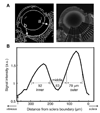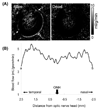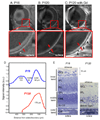Layer-specific anatomical, physiological and functional MRI of the retina
- PMID: 18792422
- PMCID: PMC2752861
- DOI: 10.1002/nbm.1311
Layer-specific anatomical, physiological and functional MRI of the retina
Abstract
Most retinal imaging has been performed using optical techniques. This paper reviews alternative retinal imaging methods based on MRI performed with spatial resolution sufficient to resolve multiple well-defined retinal layers. The development of these MRI technologies to study retinal anatomy, physiology (blood flow, blood volume, and oxygenation) and function, and their applications to the study of normal retinas, retinal degeneration and diabetic retinopathy in animal models are discussed. Although the spatiotemporal resolution of MRI is poorer than that of optical imaging techniques, it is unhampered by media opacity and can thus image all retinal and pararetinal structures, and has the potential to provide multiple unique clinically relevant data in a single setting and could thus complement existing retinal imaging techniques. In turn, the highly structured retina with well-defined layers is an excellent model for advancing emerging high-resolution anatomical, physiological and functional MRI technologies.
Figures














References
-
- Kaufman PL, Alm A, editors. Adler's Physiology of the Eye. Mosby: St Louis; 1992.
-
- Bron AJ, Tripathi RC, Tripathi BJ. Wolff's Anatomy of the Eye and Orbit. London: Chapman & Hall Medical; 1997.
-
- Buttery RG, Hinrichsen CFL, Weller WL, J.R H. How thick should a retina be? A comparative study of mammalian species with and without intraretinal vasculature. Vision Research. 1991;31:169–187. - PubMed
-
- Harris A, Kagemann L, Cioffi GA. Assessment of human ocular hemodynamics. Surv of Ophthalmol. 1998;42:509–533. - PubMed
-
- Bill A. Circulation in the eye. In: Renkin EM, Michel CC, editors. Handbook of physiology Part 2 in Microcirculation. Bethesda, MD: American Physiological Society; 1984. pp. 1001–1035.
Publication types
MeSH terms
Substances
Grants and funding
LinkOut - more resources
Full Text Sources
Medical

